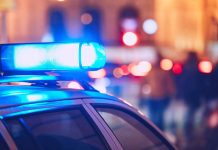
ILOILO – Shellfish harvested from the coastal waters of barangays Asluman and Gabi in Gigantes Island, Carles town were found to be safe for human consumption.
On Wednesday afternoon, Sept. 28, Bureau of Fisheries and Aquatic Resources (BFAR) Region 6 regional director Remia Appari announced the results of the confirmatory test conducted by the BFAR-National Fisheries Laboratory indicating that the paralytic shellfish toxin (PST) from the meat samples was found below the Philippine Regulatory Limit of 60μg/100g shellfish meat.
Based on the Fisheries Administrative Order No. 235, Series of 2010, “if the toxicity levels in shellfish of 60μg/STX equivalent/100g or above, (it) is considered positive for paralytic shellfish poison (PSP).”
Because of this, Aparri advised the public that shellfish harvested from the coastal waters of barangays Asluman and Gabi are safe for human consumption.
Further, gathering and/or harvesting and marketing of shellfish from these areas are now allowed.
Fish, squid, shrimp, and crabs are also safe for human consumption provided they are fresh and washed thoroughly, and internal organs such as gills and intestines are removed before cooking.
However, the BFAR and local government unit of Carles are still closely monitoring the coastal areas of the two barangays to safeguard public health and provide support to the shellfish industry, added Aparri.
A warning was issued last week telling the residents to stop eating shellfish from their waters for the meantime because based on the laboratory examination conducted by BFAR Regional Fisheries Laboratory VI using Lateral Flow ImmunoChromatography (LFIC) screening test, shellfish meat samples collected from barangays Asluman ang Gabi are positive for PSP.
Aparri explained that it is harmful to people to consume shellfish or acetes with high PSP because it may cause allergy, headache, vomiting, or for those with low immunity or comorbidity — death.
“Kon taas ang level sang toxin sa ginakaon mo may nagakapatay or mortality kay depende man ini sa lawas and resistensya mo,” the BFAR-6 director added.
BFAR-6 conducts regular monitoring in areas with recorded red tide occurrences like Carles by collecting water and shellfish meat samples, until it was discovered that in the aforementioned barangays had samples which turned out positive for red tide or harmful algal bloom./PN




